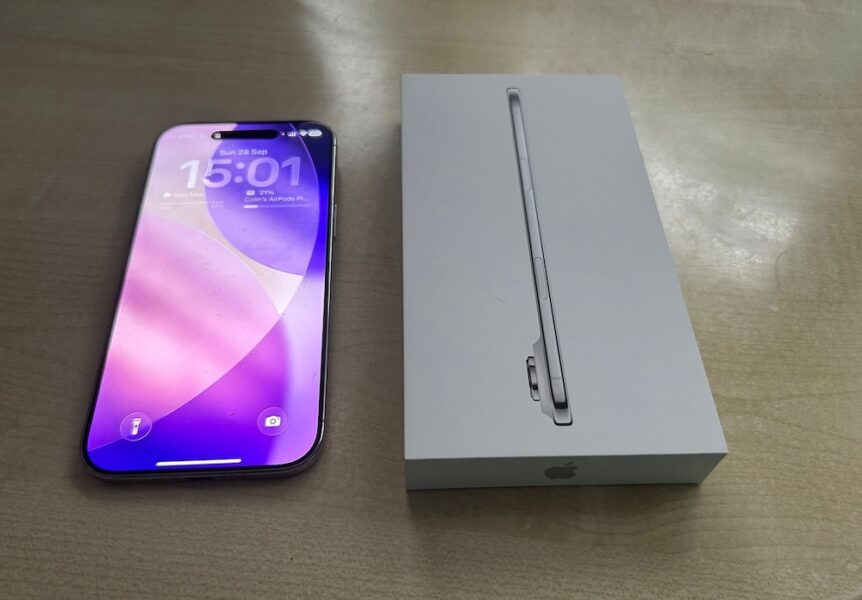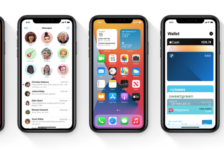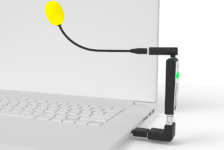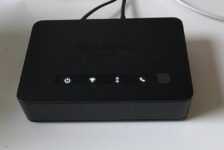When Wall Street Journal tech columnist Joanna Stern remarked on Threads that the iPhone Air might be the perfect “bed phone,” it wasn’t just a throwaway comment. It captured something millions of us do every day — using our phones in bed. Whether it’s late-night doomscrolling, a quick YouTube binge, or simply setting an alarm, phones have become bedtime companions.
The iPhone Air itself is Apple’s brand-new addition to the lineup — a model that’s significantly lighter and thinner than any iPhone the company has ever made, yet still carries over many of the Pro-level features. It represents Apple’s boldest attempt yet to rethink what an iPhone can feel like in the hand.
For me, with severe muscle weakness, Stern’s phrase resonated even more. Because of the fatiguing effects of my muscle-wasting disability, I spend more time in bed than most people. I’ve always bought the Pro model, despite its weight, and just about managed to use it lying on my side. But the idea of a lighter, thinner iPhone that reduces fatigue struck a real chord.
This iPhone Air review looks at how Apple’s lightest phone yet fits into that “bed phone” idea — and whether its trade-offs are worth it.
iPhone Air review: the basics
• Design & weight: At 165 g and just 5.6 mm thick, the Air is the thinnest and lightest large-screen iPhone Apple has made.
• Display: A 6.5-inch Super Retina XDR OLED, ProMotion 120 Hz refresh rate, and peak brightness up to 3,000 nits.
It’s not just that the iPhone Air is thinner and lighter — it also has a larger display than the iPhone 17 Pro. At 6.5 inches, it sits between the 6.3-inch iPhone 17 Pro and the 6.9-inch iPhone 17 Pro Max. For me, this hits a sweet spot: I get the benefits of a bigger screen without the bulk and weight that usually come with it.
• Chip & connectivity: Runs on the A19 Pro chip (with one GPU core disabled vs Pro models), plus Wi-Fi 7 and Bluetooth 6.
• Camera: One 48 MP rear camera and an 18 MP front camera, with no ultra-wide or telephoto lenses.
I haven’t gone into detail on the camera in this iPhone Air review for a reason: I can’t physically hold an iPhone to take photos, so it isn’t part of my daily use. The breakthrough has come instead from Ray-Ban Meta smart glasses, which over the past couple of years have given me the ability to take photos hands-free. In many ways, they’ve rescued my photography — opening up creative possibilities I’d lost with phones.
• Battery life: Apple claims up to 27 hours of video playback. Reviewers note shorter real-world stamina compared with Pro models.
Why weight matters most in bed
This is where the Air’s design shines. Holding the Pro in bed is possible, but it gets tiring. A lighter, thinner phone means easier late-night reading, browsing, or social scrolling — not just for people with muscle weakness, but for anyone who’s ever dropped a heavy phone on their face mid-scroll.
From my own iPhone Air review experience, the reduced weight makes it far easier to use lying down on my side in bed.
I’ve also been struck reading so many early iPhone Air reviews by able-bodied tech writers who mention how tiring it can be to hold the larger, heavier Pro and especially Pro Max models. It made me realise that the appeal of a lighter phone goes well beyond people with severe muscle weakness. Just last week, a friend in her seventies told me she was struggling to hold her iPhone 16 Pro because of arthritis in her hands. I suggested she try the Air in a phone shop — and after doing so, she immediately traded in her recently purchased 16 Pro for the lighter Air model.
Battery life: the trade-off
Battery is the biggest concern reviewers have raised. The Air performs fine for typical use, but drains faster under heavy workloads. For me, it’s only a medium issue.
In bed, I keep a six-foot charging cable within reach. The risk comes if I forget to ask my carer to plug it in before leaving — four hours of continuous screen-on time can drain my Pro, and the Air may behave similarly. Out in my electric wheelchair, though, I can charge via the chair’s built-in USB, so battery isn’t a deal-breaker.
In my short time with the iPhone Air, I’ve found the battery life surprisingly good — certainly on a par with the iPhone 16 Pro I traded in.
Every mainstream iPhone Air review I’ve read makes the same point: lighter weight comes at the cost of battery stamina. For some people that will be a deal-breaker. For me, it isn’t.
Performance and microphones
The A19 Pro chip ensures smooth performance for the things I actually do: Safari, social media, and dictation. The missing GPU core will only matter for gaming or video editing.
What does matter is microphones. The Pro line includes a four-mic “studio-quality” array that improves dictation accuracy and noise handling. Apple lists only “built-in microphones” for the Air without saying how many, and teardowns haven’t clarified it yet. For someone like me who relies on voice input, that’s a key unanswered question.
In my own short time with the phone, though, I’ve noticed no difference in dictation performance with Apple’s Voice Control compared to the iPhone 17 Pro. That’s one of the most encouraging outcomes from this iPhone Air review so far.
Speakers: a noticeable downgrade
One compromise that quickly stood out is audio. The iPhone Air has only a single speaker, compared with the stereo setup on the Pro models. Many reviewers have already pointed out how noticeable this is, with no true stereo separation and a flatter sound overall.
In my own experience, it’s been disappointing. Lying down in bed, it isn’t practical for me to wear AirPods for long periods, so I rely on the phone’s built-in audio for YouTube videos or podcasts. With the Air, the sound is noticeably thinner and tinnier than on the Pro. For casual listening, it works, but anyone who spends time with spoken word or video content will immediately hear the drop in quality.
Looking ahead
The iPhone Air is a beautifully made device that feels strikingly different in the hand. It’s a real feat of engineering for Apple to slim the phone down this much while still carrying over so many Pro-level features. My sense is that this first-generation model lays the groundwork: if Apple adds a second rear camera, a second speaker, and stronger battery life in a future version, the iPhone Air could very well become the perfect iPhone for me.
Verdict: the rise of the “bed phone”
On balance, the iPhone Air feels like it was designed for comfort. My short time with the iPhone Air suggests this could be the ideal balance: light, fatigue-reducing, still powerful enough for everyday tasks. The trade-offs — shorter battery life, fewer cameras, unclear mic setup — are real, but may not matter if your main uses are browsing, reading, dictation, and social apps.
For me, the next step is to try the Air side by side with my Pro. If dictation holds up, the Air could replace the Pro. If not, the Pro stays.
Either way, Joanna Stern’s “bed phone” remark rings true. Thinner and lighter isn’t just a design flourish. It’s about how we really use our phones — and for most of us, that includes bed.






